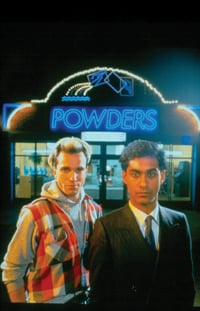The art of British film
Forget the box office figures, says John Newbigin, it is time we assessed the cultural impact of film.

Francois Truffaut once mocked that the words ‘cinema’ and ‘Britain’ were incompatible – a mischievous, if traditional, bit of Anglo-French knockabout, but one that hit the most sensitive spot of the British cinema psyche. Yes, we do Ealing comedies and James Bond. Yes, we win a lot of Oscars and the occasional Palme d’Or. Yes, we have great actors and do gritty documentaries. But do we do art? Even the DCMS seems unsure; British film has a seat at the table for creative industries but it is not quite yet recognised as an artform.
To move the debate on, the UK Film Council published a study last June to highlight the cultural rather than the economic value of British film. Taking a random selection of 200 films (from more than 4,500 feature films) released between 1946 and 2006, and a further 200 films chosen by professional observers as being of lasting value and significance, ‘Stories we tell ourselves’ explores the themes, genres and audience responses that have shaped Britain’s film heritage.
INFLUENCING IDENTITY
The report also looks at the extent to which the language, styles, fashion and music of particular films has spilled out into wider aspects of the nation’s life. Take, for example, the way in which cinema has shaped our perceptions of national and regional identity. Films like ‘Saturday Night and Sunday Morning’, ‘Local Hero’, ‘The Full Monty’, ‘Bloody Sunday’ and ‘Trainspotting’ all show a vivid portrayal of life in different communities and corners of the UK. It’s popular with audiences, too. ‘Get Carter’, for example, hardly showed a benign view of life on Tyneside but decades after its release, film fans in Gateshead fought to stop the demolition of the multistorey car park in which some of its most memorable scenes had been shot. And, while most of us would assume that the top film for Scots is Mel Gibson’s ‘Braveheart’, it’s run a close second by ‘Trainspotting’, which shows up a somewhat less flattering view of Scotland. In fact, the 400 films in the study sample showed a remarkably even split between those that uphold and even glorify what might be seen as core British values and those that, with equal energy and enthusiasm, mock and undermine them.
The emergence of films addressing issues of race and ethnicity is also charted. From early breakthroughs into television and cinema by black and Asian filmmakers in the late 1970s, to the huge success of ‘My Beautiful Launderette’ in 1985, a film that emphatically moved the representation of multi-cultural Britain from the margins into the mainstream. The impact of new ideas and new filmmakers in those half dozen years also owes much to the influence of the independent film and video workshop movement, which spread far beyond the UK.
Changing technology is another core part of the story. For its first two decades, British television seemed to pose a terminal threat to the dynamism of film. But eventually, TV opened up a new chapter for film lovers, allowing them to rediscover old and classic films that had no chance of getting theatrical reruns, a trend that has been hugely intensified with the spread of DVDs, online access to digitised film and the mushrooming of the blogosphere with its thousands of amateur film critics. Gems from the 40s and 50s, long lost in back catalogues, are being rediscovered and reappraised.
BRITS ABROAD
There’s a whole chapter in the study on ‘The perception and impact of “Britishness” abroad’. It’s easy to forget that in large parts of the world, the image of Britain owes at least as much to Mr Bean as it does to Mr Beckham, although it’s also true that filmmakers such as Stephen Frears, Mike Leigh, Ken Loach, Derek Jarman and Peter Greenaway enjoy greater recognition and status in other parts of Europe than they do at home in the UK.
The anthropologist Clifford Geertz defined culture as “stories we tell ourselves about ourselves”. The 4,655 British films that played in our cinemas between 1946 and 2006 have not only reflected who we are – to ourselves and to others around the world – but have also played a significant role, perhaps a more significant role than most of us acknowledge, in shaping our identity. As the arts – especially the publicly funded arts – seek to move beyond some of the cruder measures of public value that have evolved over the last decade, this attempt to measure the cultural impact of British film makes a valuable contribution to the debate. To hardcore bean counters some of it may seem no more than entertaining anecdote, but by tracking the story across such a long period of time and across such a broad swathe of material, I believe it tells us more about the real value of cinema to our cultural life than any amount of economic analysis could achieve. It’s a model that could work for other artforms, too. As for Francois Truffaut, the only adequate response is ‘cinema’ and ‘Britain’ go together as naturally as Laurel and Hardy, Powell and Pressburger, Merchant and Ivory, Bevan and Fellner.
Join the Discussion
You must be logged in to post a comment.